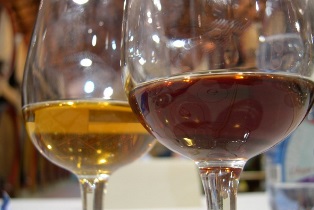
WTI Magazine #33 2014 June, 4
Author : Vino OK Translation by:
England and Marsala Port and Sherry wines have in common their history, linked to the trade travels of the English merchants. From '500, the nascent British Merchant Navy was always travelling, browsing the seas to supply the increasingly prosperous economy of the kingdom.
Imports of wine in the mother country were among the more important trades: England has historically been, from the seventeenth century onwards, the most important importer of wines for many centuries, until it was undermined by the United States.
The commonality of the three wines produced in Portugal, Spain and Sicily lies in the fact that the ships were following a precise Mediterranean route for supplies of wine, stopping first at Oporto, then Spain, and finally in the port of Marsala, to buy the local sweet wine so strong and so well loved in England.
So, the tradition of Marsala and its international knowledge and appreciation goes back to a few centuries ago. In fact, the oldest winery in Marsala was founded in 1833 by Vincenzo Florio, who first understood the enormous commercial possibilities of the local wine.
The grapes used to produce the white Marsala are Catarratto, Grillo, Damaschino and Ansonica, also called Inzolia or Insolia: and they are all Sicilian grapes.
Grillo provides wines with aromas of citrus, sometimes earthy, full-bodied. Wines can also be slightly astringent in the colder seasons.
Catarratto is the more common white variety in Sicily, especially in the province of Trapani and it is the more frequenkly mainly used in cutting Marsala, even if is losing ground to Inzolia. Lately it has been rediscovered as a grape to make wine in purity, for its good acidity.
Inzolia grape is very aromatic, with aromas of walnuts and almonds, while Damaschino is nowadays cultivated in just a few plots, replaced by Cataratto due to its greater resistance to phylloxera.
The current designation of origin Marsala was established by ministerial decree on May 28, 1987, while the original authorization for the production of this sherry wine in the province of Trapani dates back to 1969.
The winemaking is done by natural fermentation, and the finished wine is mixed with few ethyl alcohol, in order to fortify the wine.
For the whites wines the main types are Gold and Amber, which are divided into types like Fine; Superiore; Superiore riserva; Vergine or Soleras; Vergine riserva or Soleras riserva; Vergine stravecchio or Soleras stravecchio.
It is also distinct in dry, semi-dry and sweet, depending on the concentration of sugar.
Marsala is considered among the top four dessert wines in the world, is very reputed in the combinations with fish and dried meat, or with sweets or even as a meditation wine. It must reach an alcohol content of at least 18% vol.



